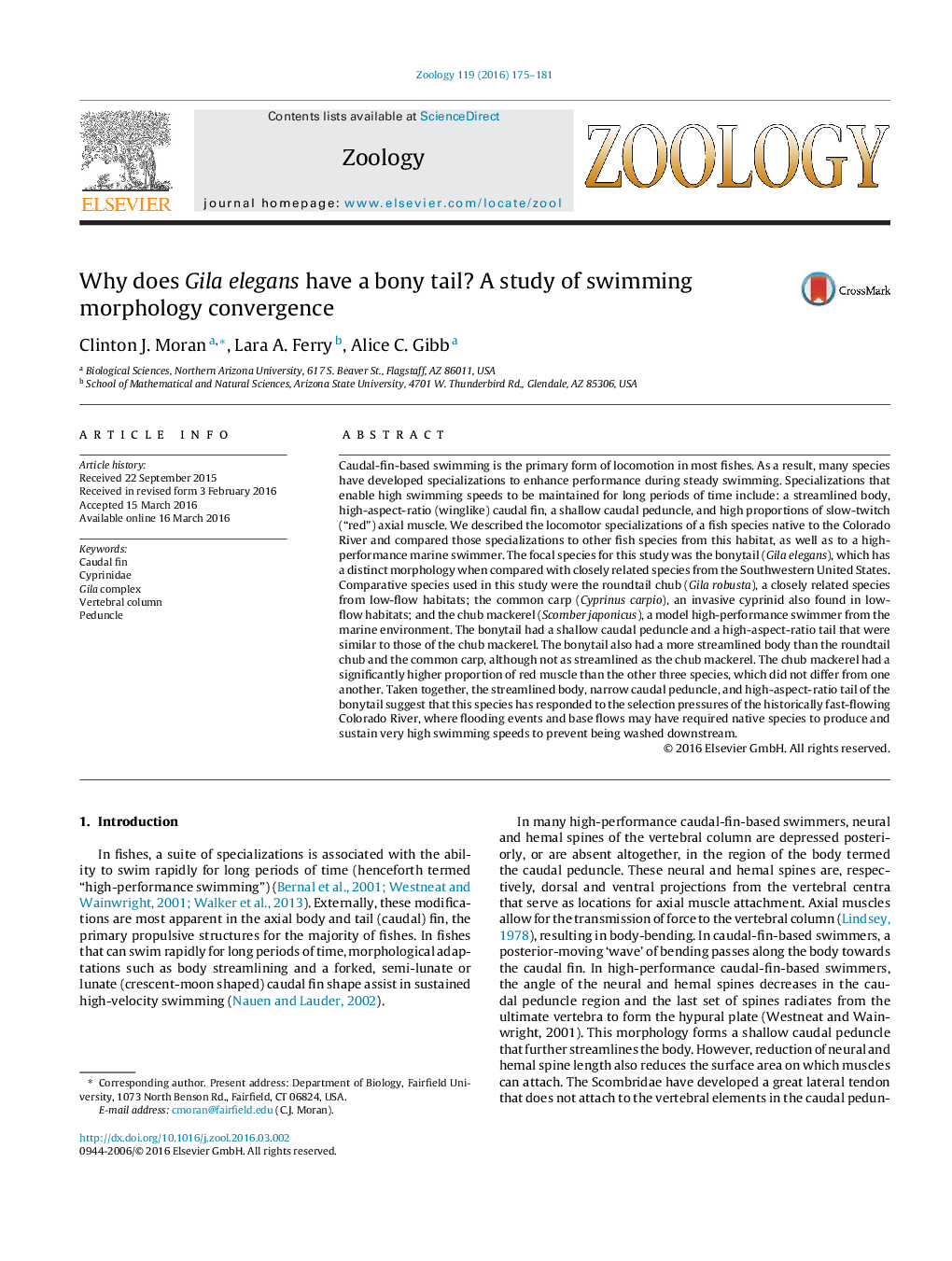| کد مقاله | کد نشریه | سال انتشار | مقاله انگلیسی | نسخه تمام متن |
|---|---|---|---|---|
| 2790962 | 1404425 | 2016 | 7 صفحه PDF | دانلود رایگان |
• We investigated the unique locomotor morphology of the bonytail (Gila elegans).
• We compared its locomotor morphology to that of the chub mackerel, roundtail chub and common carp.
• Its high-aspect-ratio caudal fin and shallow caudal peduncle suggest that the bonytail is specialized for high-performance swimming.
• Its locomotor morphology specializations suggest that it is adapted for high flow events in the Colorado River.
Caudal-fin-based swimming is the primary form of locomotion in most fishes. As a result, many species have developed specializations to enhance performance during steady swimming. Specializations that enable high swimming speeds to be maintained for long periods of time include: a streamlined body, high-aspect-ratio (winglike) caudal fin, a shallow caudal peduncle, and high proportions of slow-twitch (“red”) axial muscle. We described the locomotor specializations of a fish species native to the Colorado River and compared those specializations to other fish species from this habitat, as well as to a high-performance marine swimmer. The focal species for this study was the bonytail (Gila elegans), which has a distinct morphology when compared with closely related species from the Southwestern United States. Comparative species used in this study were the roundtail chub (Gila robusta), a closely related species from low-flow habitats; the common carp (Cyprinus carpio), an invasive cyprinid also found in low-flow habitats; and the chub mackerel (Scomber japonicus), a model high-performance swimmer from the marine environment. The bonytail had a shallow caudal peduncle and a high-aspect-ratio tail that were similar to those of the chub mackerel. The bonytail also had a more streamlined body than the roundtail chub and the common carp, although not as streamlined as the chub mackerel. The chub mackerel had a significantly higher proportion of red muscle than the other three species, which did not differ from one another. Taken together, the streamlined body, narrow caudal peduncle, and high-aspect-ratio tail of the bonytail suggest that this species has responded to the selection pressures of the historically fast-flowing Colorado River, where flooding events and base flows may have required native species to produce and sustain very high swimming speeds to prevent being washed downstream.
Journal: Zoology - Volume 119, Issue 3, June 2016, Pages 175–181
